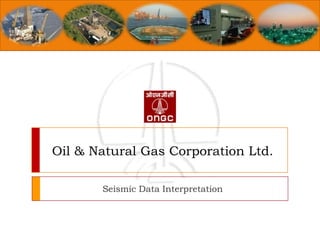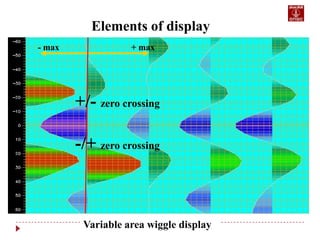Seismic interpretation involves correlating seismic data features with geological elements to understand the subsurface. The goal is to map reservoirs, including depth, thickness, and properties. This involves processing data, well calibration, horizon and fault tracking, and attribute analysis. Direct hydrocarbon indicators on seismic can help identify potential reservoirs, but require validation with amplitude versus offset analysis due to limitations and need for a geological model.
















































